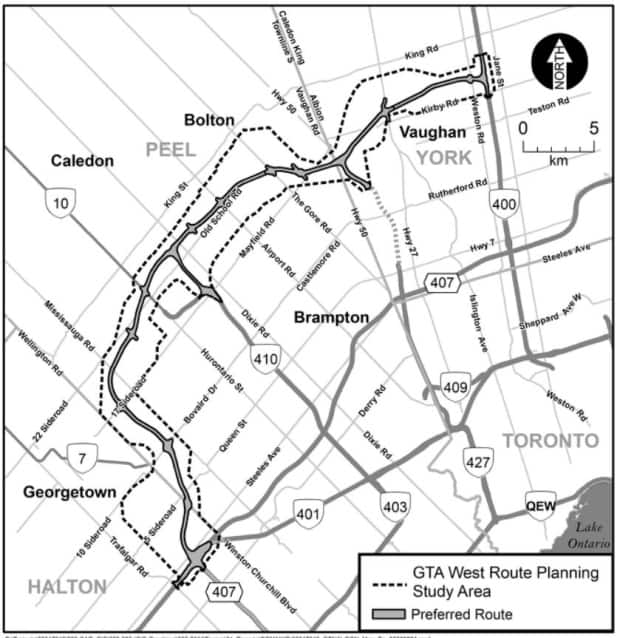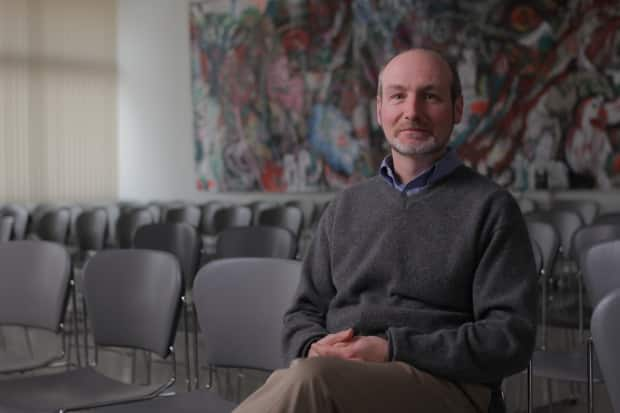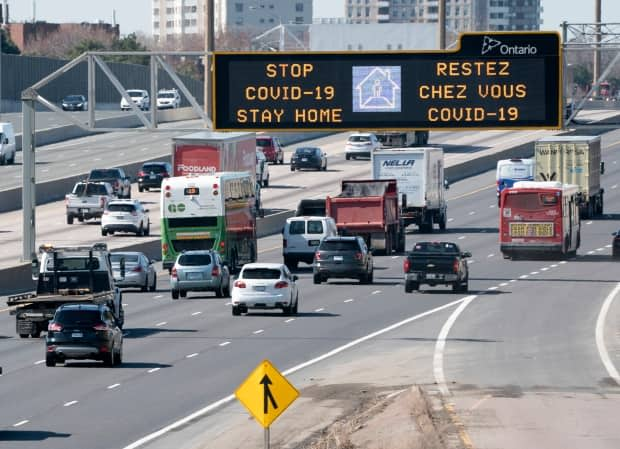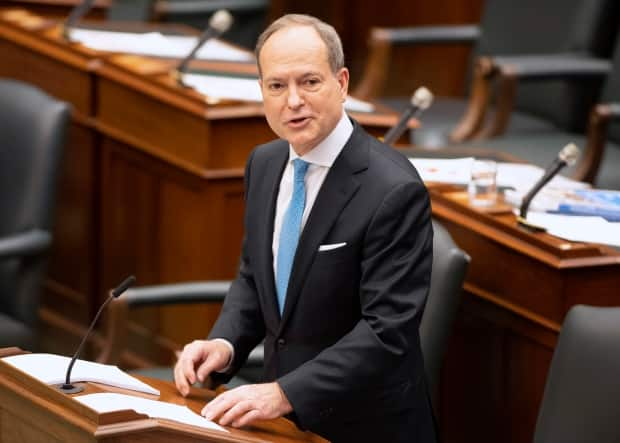Ford government plan to build new GTA highways imperils emissions targets, critics say

The Ontario government's plan to build a new 400-series highway in the northwestern Greater Toronto Area will drastically increase carbon emissions and make the province's climate change goals more difficult to achieve, environmental groups and transportation experts warn.
Gideon Forman, a policy analyst with the David Suzuki Foundation, said building Highway 413 will lead to more cars on the road and fewer trees to sequester carbon because it will pave over areas of the protected Greenbelt.
"Going ahead with Highway 413 is exactly the opposite from the direction that we need to be going as a province and indeed as a country," said Forman.
"Ontarians generally do not want to see highways going through the Greenbelt during a climate crisis."
Ontario Finance Minister Peter Bethlenfalvy pledged new funding for both Highway 413 and the Bradford Bypass in the fall economic statement on Thursday, placing the two projects at the centre of both the government's plan for economic recovery from COVID-19 and the Progressive Conservative Party's re-election strategy ahead of a June 2022 vote.

Highway 413, also known as the GTA West, is a proposed four-to-six-lane highway that would follow a 59-kilometre route from Highway 400 in Vaughan and curving west to where Highways 401 and 407 meet in Halton Hills. The Bradford Bypass would connect the 400 and 404 via a 16.2-kilometre, four-lane highway.
There's no word yet from the province on when both highways would be completed, as both Ontario and the federal government are assessing their potential environmental impact.
But the province's commitment comes days after world leaders wrapped up their participation in the COP26 UN Climate Change Conference. Provincial Environment Minister David Piccini was in attendance to "contribute the province's voice to the global conversation about climate change," according to his office.
Induced demand
"It's difficult to imagine a better plan for increasing carbon emissions related to transportation," said Mark Winfield, a professor of environmental and urban change at York University in Toronto.
Winifield said because of "induced demand," a well-established concept in transportation studies, building new highways in the GTA region will attract more vehicle and heavy-truck traffic. Indeed, the transportation ministry projects more than 300,000 trips would be taken on Highway 413 every day by 2031.

In addition to increasing transportation-related emissions, Winfield said new highways will also worsen urban sprawl due to the construction of more low-density, car-dependent communities surrounding the new roadways.
"You build highways, you will attract automobile traffic and you will attract development, which sort of effectively feeds off the highways," said Winfield.
Transportation emissions
Ontario has committed to reducing greenhouse gas emissions by 30 per cent by 2030 compared to 2005 levels, a target that was in line with the Paris Agreement but is now less ambitious than the federal government's target of reducing emissions by 40 to 45 per cent compared to 2005 levels.
The province made significant progress in recent years when former Liberal governments phased out coal-fired electricity plants. As of 2019, emissions decreased by 42 million tonnes, or 21 per cent, since 2005, according to Environment and Climate Change Canada. But that progress has recently stalled, and emissions rose in 2018 before levelling off in 2019.

Transportation emissions from the Greater Toronto and Hamilton Area alone make up approximately 34 per cent of the province's total emissions, according to The Atmospheric Fund.
A consulting firm hired by Environmental Defence to assess the carbon emission and air pollution impacts of Highway 413 projected it would add an additional 700,000 tonnes of carbon emissions from vehicle trips each year upon completion, for a total of 17.4 million tonnes by 2050.
"It takes us in the wrong direction," said Keith Brooks, program director at Environmental Defence. "It's going to make the targets that we're already not on track to meet much, much harder to meet."
Projects boost economy, cut commute times: minister
According to the government, Highway 413 will bring a number of economic benefits, including 3,500 jobs and a $350-million boost in gross domestic product, all while reducing commute times by up to 30 minutes for drivers travelling the entire route.
Bethlenfalvy, the finance minister, said it will also ease traffic gridlock and reduce congestion in a region that's expected to add one million new residents in the next five years.
"If we've got gridlock and congestion today, we're going to have it even worse tomorrow," Bethlenfalvy said in an interview on CBC's Metro Morning.
"The congestion and gridlock is costing us about $11 billion a year in lost productivity. And many people are flocking to Ontario, but they're also going to the [Greater Toronto and Hamilton] region, where it's not as easy to bike to work or take a subway."

Bethlenfalvy suggested that Ontario is making progress on reducing its environmental footprint by expanding the subway system in Toronto and investing in electric vehicle production.
"We're doing our part in Ontario," said Bethlenfalvy.
Alternatives to highways
Brooks and Winfield said to reduce emissions from vehicles, Ontario needs to get more people off the roads by building more sustainable communities that are high-density, close to public transit and walkable.
"You would want to see 'complete communities' around the different urban nodes across the region so that people would be able to work and live and go to school and shop and do all the other things they need to do in relative close proximity to where they live," said Winfield.
The City of Brampton is trying to put this into practice with a plan to transform the suburban city into a self-sustaining urban centre.
In plans for the Heritage Heights neighbourhood, an undeveloped area in the northwest of Brampton, city planners have proposed building a more dense, downtown-type neighborhood, complete with a Champs-Élysées-style "urban boulevard" with transit options as well as retail, employment and recreational opportunities.
"That is a better solution from an environmental perspective," said Brooks.


